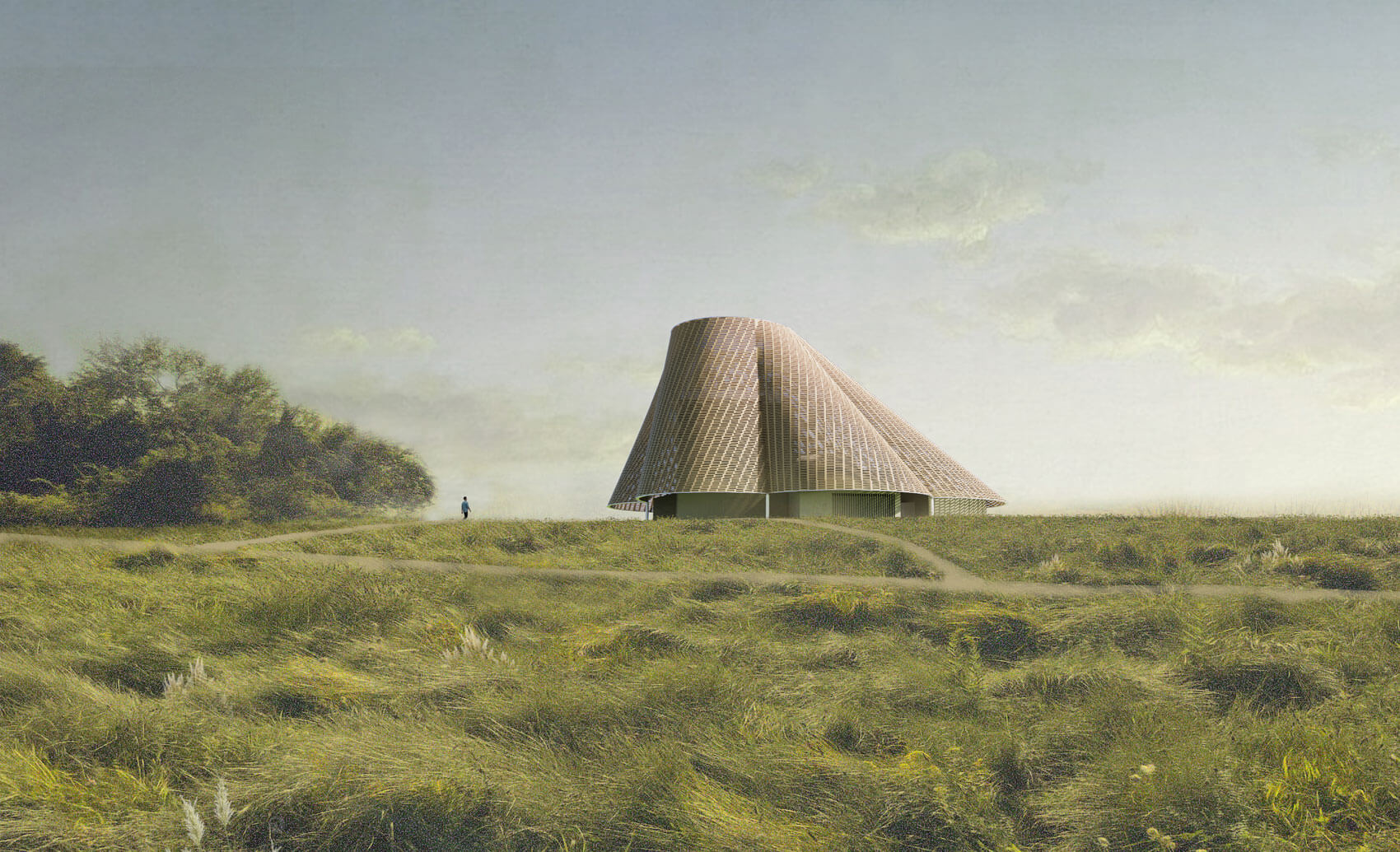Last year, a $5 million grant from the New York State Council on the Arts helped pave the way for at least a dozen new pavilions to be built atop Art Omi at Chatham, a 190-acre site in Hudson Valley. SO – IL was one of the several designers selected to ideate a small building there, just a few miles northwest of Art Omi’s verdant 120-acre campus in Ghent.
This week, SO – IL unveiled renderings for its proposed pavilion replete with five interconnected, unique gallery spaces. Art Omi’s pavilion project broke ground in May. Previously several other artists and architects working on designs for the art campus revealed first looks at their contributions, among these Jahn/and BKSK Architects.
The mini pavilion by SO – IL, from the exterior, has a conical form made of stacked wooden blocks and a filigree texture. The asymmetrical shell is skewed on its Y axis, and rises from 7 to 35 feet.

The enclosure will create dynamic shadow effects for visitors standing underneath the membrane looking out at the Adirondack mountains. An oculus will hover over a central courtyard that hugs visitors as they enter and exit the galleries.
This semi-porous membrane made of stacked blocks covers the five spaces, each with their own distinct volumetric proportions, clad in dark gray. At each of the five spaces, there will be one way in, and one way out. Each will have different lighting conditions: Some will have skylights while others filter light inside via windows.

“What we create is not just what you see—it is what you feel, what you cannot escape encountering,” Florian Idenburg and Jing Liu shared in a joint statement. “This pavilion invites stillness, where architecture becomes a reflection of your own experience, unfolding with each light and shadow.”


“The Mini Pavilions will offer visitors a unique, durational viewing experience that cultivates privacy and intimacy with a singular work of art,” added Francis Greenburger and Natalie Diaz, coexecutive directors of Art Omi at Chatham. “We aim to counter the false urgency of our culture by encouraging viewers to pause and sit with a piece, fostering meaningful encounters with a work of art that allows its properties to be revealed and studied beyond a glance, drive-by, or a crowded view.”
SO – IL’s pavilion is slated for completion in 2026.

